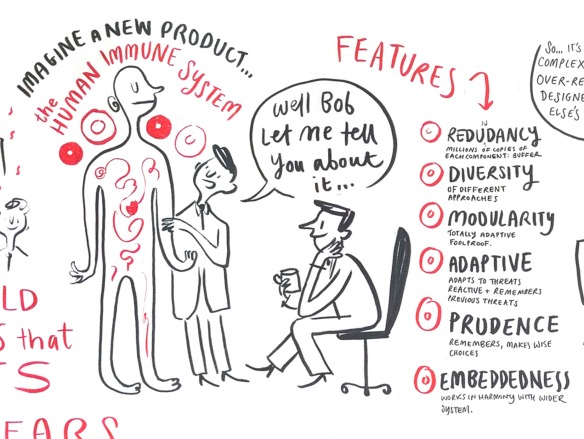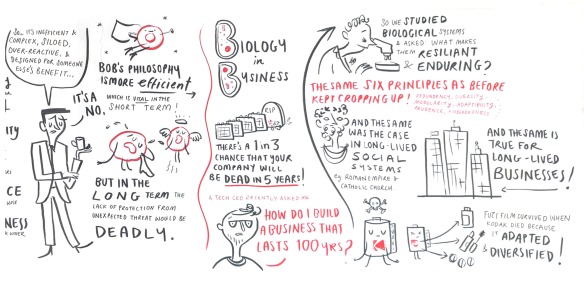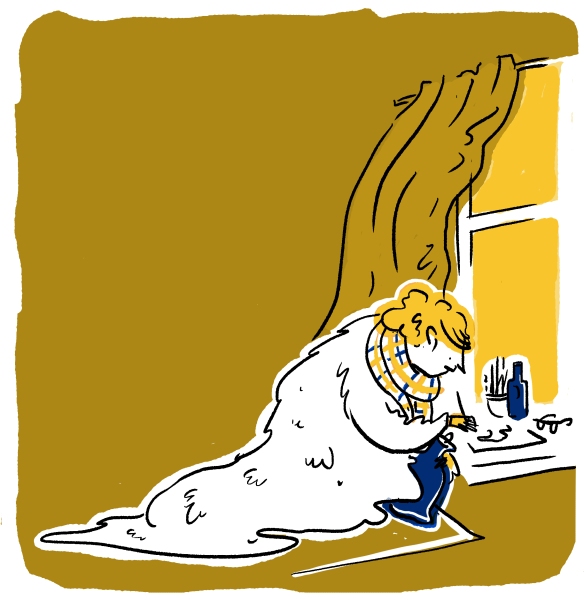Everything I have to say is VERY interesting and important and it’s probably the same with you. So why risk presenting your pearls of wisdom and rubies of wit to people in a way that will cause them to flee the room in fits of bored tears? It is well known that human brains tend to switch off after a certain amount of one particular stimulus and that most people learn better visually than they do through words alone. So how can you expect people to remain focused on 465,000 slides of text delivered in a warm room on a Friday afternoon? Open the windows, give everyone a fortifying biscuit and COMMISSION ILLUSTRATIONS for your presentation. 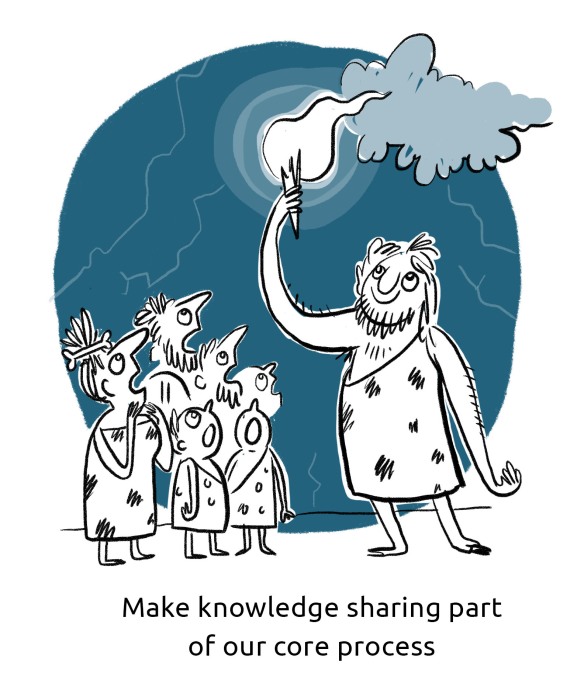
Not just any old illustrations of course. Ramming a load of stock images of smiling people running on a beach at sunset or shaking hands next to a lightbulb is really not going to do the trick. Images like this might be slightly less boring than text on it’s own, but they also smack of laziness and do nothing to delight your viewer. And in the communications business, DELIGHT is King. 
Delight, like Mary Poppin’s spoonful of sugar, often helps the ‘medicine’ go down. Delight is the added sweetness that makes your message more inviting, engaging and memorable. Stock images are not delightful. They’re like they dreary, never-ending stories your grandma tells every time she’s been at the sherry – predictable, dull and meaningless.

Commissioned images on the other hand are like rip-roaring tales told by a skilful raconteur that you can’t peel yourself away from and that keep echoing in your mind long after they’re finished. They are relevant, witty, beautiful and intelligent. They make your client feel cared for, and they are dripping with DELIGHT.
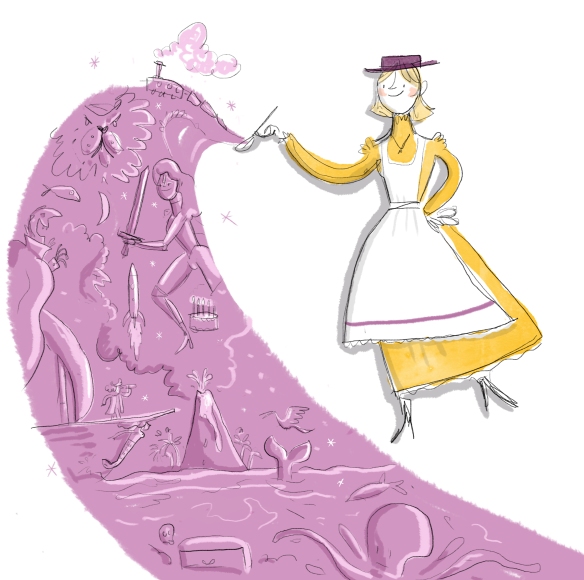
But don’t take my word for it. Using images to get your point across is also scientifically proven to be more effective. Pictures like this may seem daft, but processing images uses a different part of the brain to processing text, so including both in a presentation deck allows the viewer to use multiple parts of the brain at once. It gives the brain some variety of stimulus and allows thrilling new neural pathways to open up. This multi-channel approach actually increases the likelihood of the viewer understanding the information and committing it to memory.
So… FEEL THE RAW POWER OF DELIGHT and strongly consider harnessing the forces of art for your next presentation.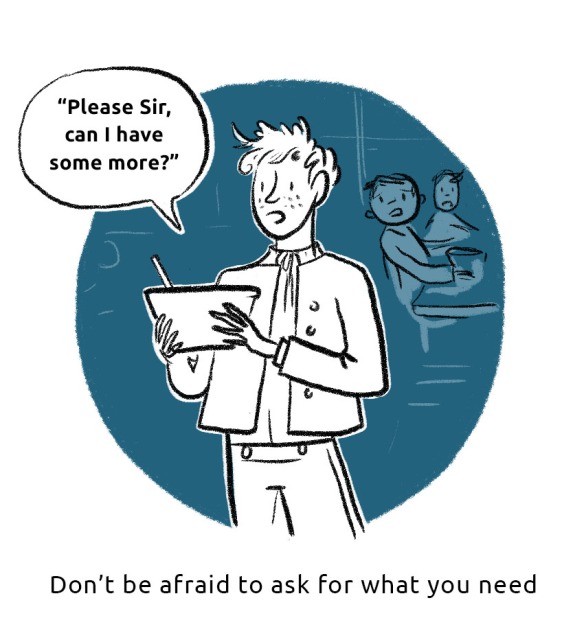
Illustrations made on Photoshop

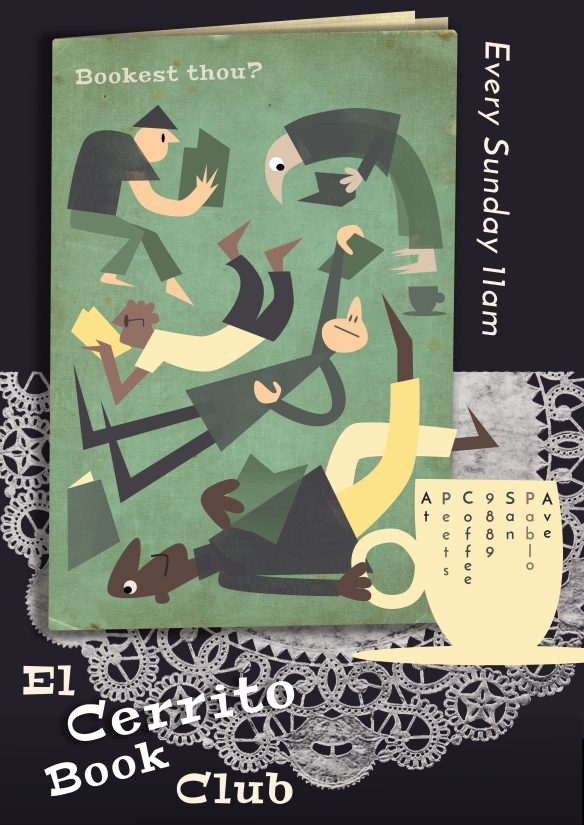
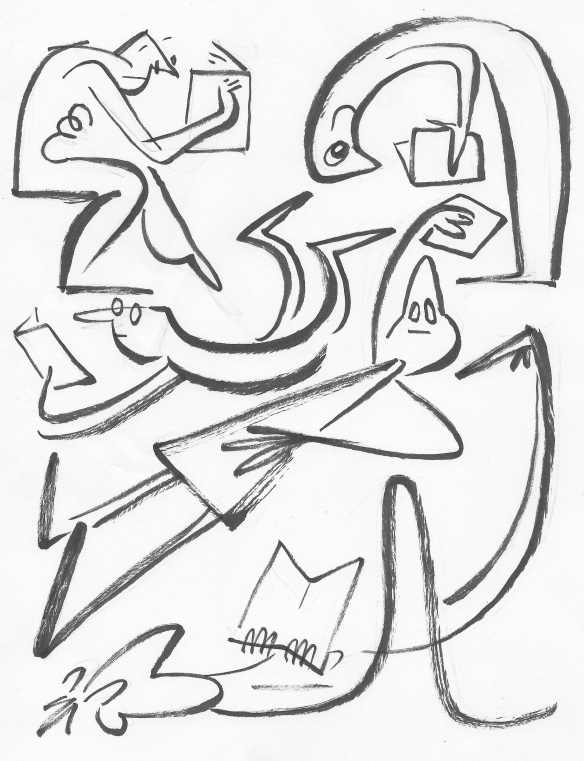
 There are 2 reasons to do Graphic Recording practice between paid jobs. 1: to get better (duh) and 2: because the vast majority of client work in this field is Data Protected. Usually you’re working with the top echelons of the company, documenting their strategy and plans for the future, so the content can be a bit top secret. That means absolutely no sharing it on your website on pain of death. As a result, many Graphic Recorders and Facilitators can work solidly for months without anything tangible to show for it (apart from a happy bank manager). So doing the odd ‘practice’ recording is good to keep your hand in, but also useful to show people what you can do. This recording took about 1.5 hours and was then photographed and cleaned up in photoshop to show how it would be delivered to the client.
There are 2 reasons to do Graphic Recording practice between paid jobs. 1: to get better (duh) and 2: because the vast majority of client work in this field is Data Protected. Usually you’re working with the top echelons of the company, documenting their strategy and plans for the future, so the content can be a bit top secret. That means absolutely no sharing it on your website on pain of death. As a result, many Graphic Recorders and Facilitators can work solidly for months without anything tangible to show for it (apart from a happy bank manager). So doing the odd ‘practice’ recording is good to keep your hand in, but also useful to show people what you can do. This recording took about 1.5 hours and was then photographed and cleaned up in photoshop to show how it would be delivered to the client. 
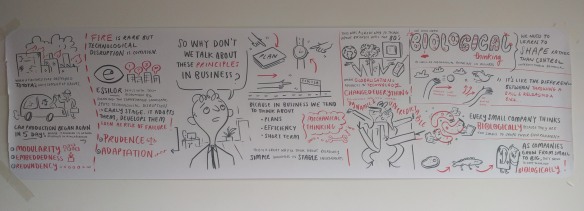 the originals
the originals